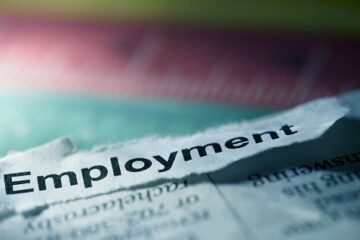First, this: All hail 2023.
If you’re a bull, you loved how the stock market ended the year: The Standard & Poor’s 500 Index (^IN) – Get Free Report rose 24%. The Nasdaq Composite Index (^COMPX) – Get Free Report jumped 43%, and the Dow Jones Industrial Average (^DJI) – Get Free Report climbed 13.7%. The small-cap Russell 2000 Index was up 15% after small returns to start the year.
But those results were off a rotten 2022 when the S&P 500 fell 18.3%, with the Nasdaq down 33.1%, the Dow off a modest 8.6% and the Russell 2000 down 21.6%.
That said, the 2023 market worked its way through dysfunction in the House of Representatives, a banking crisis that began when Silicon Valley Bank collapsed, whipsawing oil and gasoline prices, and wars in Ukraine and Israel.
But we must temper the euphoria a little. S&P 500 finished 2023 just 4.4% higher than its 2021 close, with the Nasdaq up 5.5% and the Dow up just 4.8%. The Russell is down 1.7% from its 2021 finish.
In addition, the S&P 500 in 2023 was distorted by the huge gains enjoyed by the Magnificent Seven stocks: Apple (AAPL) – Get Free Report (48.2%), Amazon.com (AMZN) – Get Free Report (80.9%), Google-parent Alphabet (GOOGL) – Get Free Report (58.3%), Facebook-parent Meta Platforms (META) – Get Free Report (194.1%), Microsoft (MSFT) – Get Free Report (56.8%), Nvidia (NVDA) – Get Free Report (238.9%) and Tesla (TSLA) – Get Free Report (101.7%)
The group alone accounted for 62% of the S&P 500’s 26.9% total return (appreciation plus dividends) in 2023.
How then to look at 2024? Here are 10 things to keep in mind now and through the year.
For an early look at what’s ahead, check out holiday sales reports and corporate pre-announcements. Retailers won’t report their fourth-quarter results until mid-February. But many do report sales for December in January. These will give investors a better picture of what happened during the holiday season. Anecdotal information suggests many shoppers were cautious in their holiday spending. Companies with bad news to report like to get it out as quickly as possible before their scheduled earnings-release date. Most fourth quarter results will start to come out in mid-January.
Keep an eye on the January effect. Amazingly, 70.5% of the time since 1929, a positive month in January has meant a good year for stocks, according to S&P Dow Jones. January 2023 saw the S&P 500 rise 6.2%. It fell 6.1% in January 2008, a frightful year.
Related: What is the January Effect? Is it real?
The Fed is going to cut rates in 2024. The question is when. The earliest possible date for a rate cut Jan. 31 at the end of the central bank’s first meeting of 2024. The current Fed funds rate is 5.25% to 5.5%. It’s the foundation rate on which most U.S. interest rates are built. The financial markets are expecting six rate cuts, with the first cut coming in March. Wall Street may be too optimistic on this point. May or June looks more likely The Fed rarely makes an abrupt change in policy. They did in 2007 when it became clear the economy was sliding quickly into what would be the Great Recession.
How low will mortgage rates fall? The rate on a 30-year mortgage is about 6.6%, down from 8% in October. If the Fed cuts rates as aggressively as some think, you could see mortgage rates at 5% to 6% sometime in mid-2023. Existing home sales for 2023 look like the worst since 2011, according to Statista. Many believe rates under 7% will fuel more home-sale activity. This actually affects everybody. Every home sale generates thousands of dollars of additional spending on such things as furniture, appliances, renovations, paint and the like.
TheStreet
But isn’t a recession coming? Recessions emerge when a big economic sector crashes and drags everyone else with it. To wit: the near collapses of the banking, real estate and auto industries in 2008. Everyone on Wall Street and around the world sure expected one in 2023. It didn’t happen. There’s still a lot of talk about the recession coming in 2024 because the global economy finally will be feeling the full effects of interest-rate increases in 2022 and 2023. But there needs to be more of a trigger than mere weakness in, say, retail or technology employment. Oil prices will be something to watch, especially if the Hamas-Israel conflict heats up or the Ukraine-Russia war worsens.
Was the 2023 stock-market performance a one-off or the start of a new bull run? Many market watchers are comparing what happened in 2023 (which surprised just about everyone) to what happened when the Fed raised rates rapidly in 1994 and then started to cut in 1995. The cuts came as the Internet became much more than a pipe dream, inflation was low, global tensions were minimal for a change. Result: Five straight years of double-digit gains for the Dow, the S&P 500, and, especially the Nasdaq, which gained 85.6% in 1999 alone. That precipitated investor interest in just about every tech idea, even the dumbest. The Dot-Com bust erupted in 2000. The current fuel for the stock market now is the strong on Wall Street belief that rapid expansion of artificial intelligence through the economy will produce rapid growth over the next few years.
Related: Analyst makes a bold prediction for gasoline prices in 2024
Are stock prices too high? By some measures, the stock market looks overbought. The big rally this past fall unleashed buying demand that accelerated into the mid-to-late December. The measure to watch is the Relative Strength Index, which measures how fast an index or stock price is changing. Above 70 suggests something is overbought. The Dow’s RSI has been above 70 for 26 straight days and 27 of the last 28, with five days above 80. The S&P 500 has been above 70 for 21 straight days. The Nasdaq has been above 70 for only 11 of the last 13 days. But it was above 70 in 13 of 16 days in May and June, followed by a break July. Prices will break some time, at least for a while. It is in the nature of things.
Will the stock market and economy decide the 2024 elections? It depends. A rising market typically favors the incumbent. The rule did not apply to Donald Trump in 2020, when the S&P 500 rose 16%. Ronald Reagan won re-election 1984 despite a flat year for stocks (In his defense, the market was up big in 1982 and 1983.) It did apply to Barack Obama in 2012, when the S&P 500 was up 12.3%, and Bill Clinton in 1996, when the S&P was up 20%.


